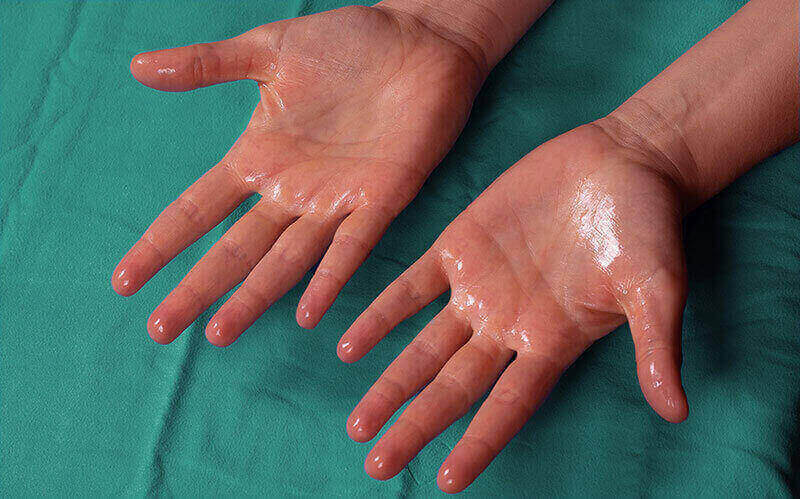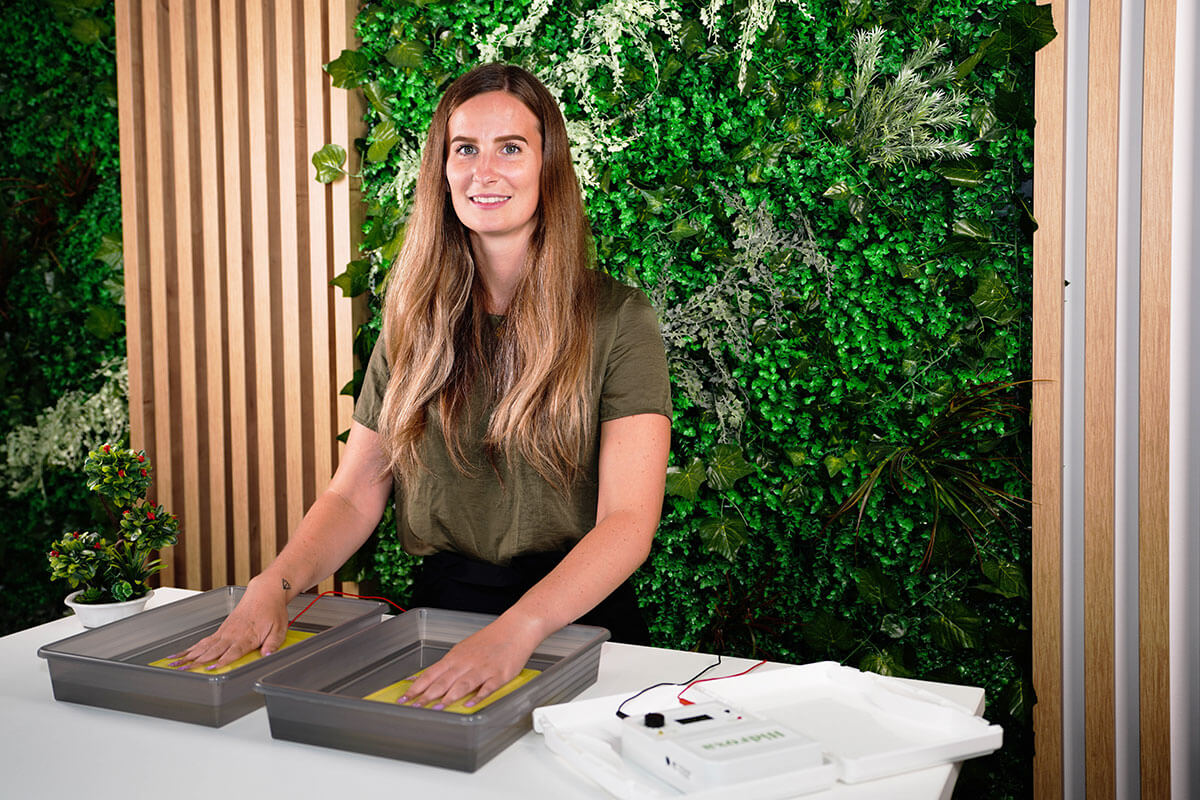Managing palmar hyperhidrosis: How to stop sweaty hands
Palmar hyperhidrosis is a condition characterized by excessive sweating in the palms of the hands. People with this condition often experience sweaty palms regardless of the temperature or their level of physical activity. Symptoms of palmar hyperhidrosis include constantly damp or wet palms, difficulty gripping objects, and a tendency to avoid handshakes and other forms of physical contact. The exact cause of palmar hyperhidrosis is not fully understood, but it is believed to be related to overactivity of the sympathetic nervous system, which controls sweating. Genetic factors may also play a role in the development of this condition. Additionally, certain triggers such as stress, anxiety, and spicy foods can exacerbate symptoms in individuals with palmar hyperhidrosis.
Common causes of sweaty hands
Sweaty hands, also known as palmar hyperhidrosis, can be a result of various factors. One common reason for sweaty hands is anxiety or stress. When individuals are nervous or feeling anxious, their body produces more sweat, and this can manifest in the palms of the hands. Some people, about 1-5% of the population, sweat excessively due to no other underlying cause. This is a medical condition that is called primary hyperhidrosis. When it affects your hands it's called palmar hyperhidrosis. Understanding these common causes can help individuals determine the best approach to managing and treating their sweaty hands.

Understanding hyperhidrosis: More than just sweaty hands
Imagine a world where a simple handshake could cause anxiety, where the natural act of holding hands becomes a source of stress. This is the reality for people living with palmar hyperhidrosis. Hyperhidrosis is not just about having sweaty hands; it's a condition that deeply affects individuals, touching every aspect of their lives from social interactions to personal confidence.
Having wet hands despite the surroundings and given situation will send out signals. Sweating is a part of our body language. When someone notices hand dripping from sweat in their peers or colleagues they might think the person is very nervous. Or that they are ill or simply think they do not care about their hygiene. This will lead to misconceptions. People with hyperhidrosis know this. So they spend a lot of time hiding their sweat.
The hidden challenges of hyperhidrosis
For most people, hands are tools for communication, work, and showing affection. But for those with hyperhidrosis, their hands tell a different story—one where sweat becomes a barrier to everyday activities. It's not just the physical sensation of sweat; it's the worry about how others will react, the embarrassment of leaving sweat marks on paper, or the fear of slipping when holding something.
Hyperhidrosis goes beyond physical symptoms. It impacts how people see themselves and how they think others see them. The constant focus on hiding their condition or finding ways to cope can be exhausting. It's a cycle of anxiety and self-consciousness that many struggle with in silence.
Identifying triggers
A crucial step in managing sweaty hands is identifying personal triggers. Common catalysts include stress, anxiety, certain foods, and even temperature changes. Recognizing these triggers allows individuals to adopt proactive measures to minimize their impact, tailoring lifestyle adjustments to their unique circumstances. Some people cannot identify any triggers. Just waking up is what makes them start sweating.
Daily management and lifestyle adjustments
For many seeking how to stop sweaty hands, the journey begins with simple, daily management strategies:
- Antiperspirants: Specifically formulated antiperspirants for hands can significantly reduce sweating.
- Hand hygiene: Regular washing and the use of alcohol-based hand sanitizers can help keep palms dry. But washing your hands often can also make them dry and trigger eczema.
- Dietary considerations: Avoiding caffeine and spicy foods known to exacerbate sweating.
- Stress management: Techniques like meditation, yoga, or biofeedback therapy can effectively reduce stress-induced sweating. But it might not help everyone.
Treatment options for sweaty hands

Managing hyperhidrosis, especially when it affects the hands, can be challenging. However, there are several treatment options available. One common approach is the use of antiperspirants specifically designed for the hands. These products typically contain aluminum chloride, which helps to reduce sweating. Another option is iontophoresis, a treatment that uses a mild electrical current to temporarily block the sweat glands. For more severe cases, medications such as anticholinergics or botulinum toxin injections may be prescribed. In extreme cases, surgical procedures such as nerve-blocking or sweat gland removal may be considered. It's important to consult with a healthcare professional to determine the best treatment plan for managing sweaty hands caused by hyperhidrosis.
When lifestyle adjustments fall short, medical treatments offer hope:
- Topical Treatments: Prescription rollons, creams and sprays containing aluminum chloride can reduce sweating.
- Iontophoresis: A non-invasive device that uses electrical currents to temporarily block sweat glands.
- B. toxin Injections: Multiple injections in each hand can reduce the sweating for 3-12 months.
- Oral medications: Anticholinergic drugs can reduce sweating but may come with side effects.
Surgical options
For severe cases where other treatments have not provided relief, surgical options may be considered:
- Endoscopic thoracic sympathectomy (ETS): A procedure that interrupts the sympathetic nerves responsible for sweating. It's effective but carries risks like compensatory sweating but also other severe side effects and there have even been deaths.
- Local Sweat Gland Removal: Less commonly performed but may be an option for localized areas of excessive sweating.
Conclusion
Wrapping up our talk about hyperhidrosis, it's clear this isn't just about dealing with extra sweat. It's a condition that really touches every part of someone's life, making even simple things like shaking hands or holding onto objects feel like big challenges. But there's a silver lining here. The stories of people living with hyperhidrosis are full of strength and hope. They show us that, despite the struggles, it's possible to push through and find ways to cope.
This article isn't just for sharing information. It's a shout-out to everyone dealing with hyperhidrosis, letting them know they're not facing this alone. It's also a nudge to the rest of us to be more understanding and supportive. By spreading the word and offering a helping hand, we can make a huge difference. At the end of the day, it's about being kind and making everyone feel included and accepted, no matter what.